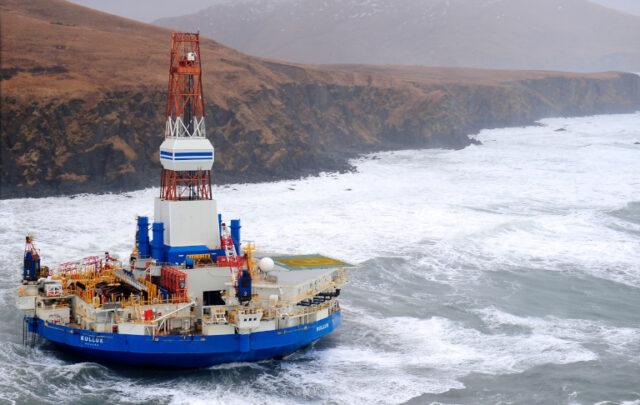Click on the headline (link) for the full text.
Many more articles are available through the Energy Bulletin homepage
Our place in the sun
Ben Cubby, Sydney Morning Herald
Spacious suburbs are perfect for household electricity generation but there are obstacles, reports Ben Cubby.
—
If it is hard to imagine a future in which the suburban streets of Mosman, or Fairfield, or Parramatta are lined with revolving wind turbines and glinting photovoltaic solar arrays, it’s worth remembering that 40 years ago, three-quarters of all Australian homes relied heavily on solar and wind power.
The Hills Hoist, the metaphor for suburbia, dried clothes without so much as a puff of greenhouse gas.
Australia’s response to curbing emissions will be decided in the same streets. Suburban sprawl could be the surprisingly green ace in Australia’s climate pack, said some of the 800 delegates who gathered in Adelaide this week for the International Solar Cities Congress.
Our preference for large backyards, detached homes and wide streets will allow for local electricity generation, effectively turning each home into a mini power-station. There are huge obstacles – principally the cost of manufacturing, buying and almost certainly subsidising the equipment – but the consensus among local government and the renewable energy industry is that the nation’s cities will be transformed within 20 years.
“The suburb is perfect for low-energy development,” said the ecologist Herbert Girardet, who helped plan South Australia’s first sustainable suburbs and works on Dongtan, a Chinese city next to Shanghai that will be powered exclusively on renewable energy.
“Low density is good for wind and solar power because there’s more space to generate locally,” Girardet says. “I would like to see the spaces between houses, and the roofs, all being used to power the homes and cars.”
The conference presented a curious mix of optimism, because most of the technology needed to slash Australia’s greenhouse emissions has been proven to work, and frustration, because far too little money has been allocated to roll it out on a massive scale.
(23 February 2008)
Solar Power to Rule in 20 Years, Futurists Say
Robin Lloyd, LiveScience
He predicted the fall of the Soviet Union. He predicted the explosive spread of the Internet and wireless access.
Now futurist and inventor Ray Kurzweil is part of distinguished panel of engineers that says solar power will scale up to produce all the energy needs of Earth’s people in 20 years.
There is 10,000 times more sunlight than we need to meet 100 percent of our energy needs, he says, and the technology needed for collecting and storing it is about to emerge as the field of solar energy is going to advance exponentially in accordance with Kurzweil’s Law of Accelerating Returns. That law yields a doubling of price performance in information technologies every year.
Kurzweil, author of “The Singularity Is Near” and “The Age of Intelligent Machines,” worked on the solar energy solution with Google Co-Founder Larry Page as part of a panel of experts convened by the National Association of Engineers to address the 14 “grand challenges of the 21st century,” including making solar energy more economical. The panel’s findings were announced here last week at the annual meeting of the American Association for the Advancement of Science.
(19 February 2008)
Tapping The Source: The Power Of The Oceans
Big Gav, The Oil Drum: Australia / New Zealand
Last year I came across the story of Dutch company Kema and their energy island idea – basically a variant on the usual pumped hydro energy storage concept where water is pumped out of a space below sea level then allowed to flow back in, generating power as it does. The “island” uses wind power to pump water out of the enclosed area. An obvious extension to this idea would be to harness ocean energy as well – letting wave and/or tidal power supplement the output of the wind turbines. An attraction of this concept is that it potentially allows a large amount of new energy storage to be brought online – and this storage would be along the world’s coastlines, where most of the population lives.
… While the practicality of these particular proposals has yet to be put to the test, the various forms of ocean power are probably the most overlooked of the big 6 renewable energy sources (along with solar, wind, geothermal, biomass and hydro).
Other forms of renewable energy are sometimes criticised for being more intermittent and less predictable than traditional power generation, however ocean energy is much more reliable – steady ocean currents could provide good baseload power, as could OTEC, tidal power is diurnal and highly predictable and waves are predictable days in advance.
In this post I’ll have a look at the amount of energy that could potentially be harvested from these sources and the various projects underway to try and make this a reality.
(24 February 2008)
Pickens on renewables and wind
CNBC via NY Times website
CNBC interviews Boone Pickens, chairman of BP Capital Management, on the prospects for various types of alternative energy.
(February 2008)
Contributor John writes:
The video runs a little over 8 mins. and is on the NY Times website.
Investing In Clean Energy Technology (Video)
Energy Policy TV
EPTV Executive NewsRoundtable —
Michael Steed, Managing Partner, Paladin Capital Group, is interviewed about the landscape of recent investment by venture capitalists and others in clean energy technologies,
including solar and biofuels. He explains what investors look at in terms of investment opportunities and return on investment.
(19 February 2008)





